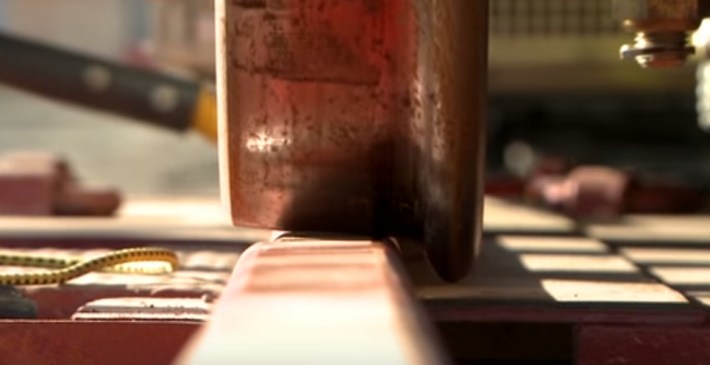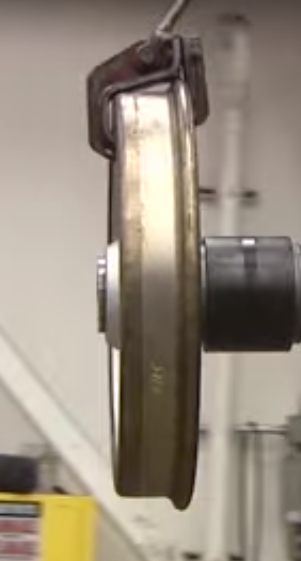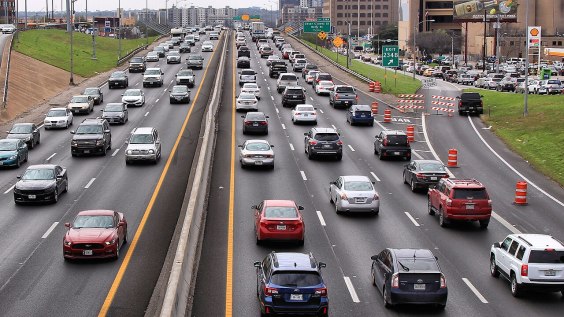BART seems to be digging itself out of a month's worth of power problems and delays on the Pittsburgh/Bay Point Line. But, no doubt, it's only a matter of time before BART gets slammed again, given the age of its fleet. Indeed, its rolling stock is so old, the agency is reduced to searching for spare parts on eBay.
That's why a good-transit-news-starved media was abuzz with the arrival of the first of BARTs new cars. Dubbed the "Car of the Future," they boast more doors (for faster loading and unloading), more comfortable seats, better seals to keep them quiet inside, and--one hopes and assumes--far more reliability. According to a BART release:
BART is now one step closer to providing much needed capacity relief with the arrival of its first new train car now set to begin a crucial onsite testing phase. The first train car was unveiled today at BART’s testing facility in Hayward, marking the beginning of the arrival of a new fleet of 775 train cars over the next five years.
“This next testing phase is critical to having safe and reliable new train cars,” said Board President Tom Radulovich. “As these new cars arrive and get approved for passenger service, we can finally start running longer trains. That’s something every line on our system needs right now. In fact, the need is so great we’ve been able to get the manufacturer to increase the monthly delivery rate from 10 cars per month to 16 per month, putting the final car delivery 21 months earlier than the original schedule.”

Replacing cars isn't going to solve all of BART's problems. BART's electrical infrastructure and computer control systems also date back to the 1970s and need to be replaced. But BARTs problems are about more than just wear and mileage. An exposé done by NBC spells out how well-meaning, young, and ambitious engineers back in the 1970s set out to metaphorically (and, to an extent, literally) re-invent the wheel. BART advanced rail technology such as regenerative braking--wherein energy from braking trains is recouped and used to accelerate other trains. But all of the new technologies came at a cost: nobody knew how they would hold up over the long run. The Nixon-era engineers were doing a long-term experiment and we are the Guinea pigs.
John Zuspan is a train-and-track specialist with over forty years of railroading experience on systems all over the world. Moving forward, he warns transit leaders to heed the lessons of the past and be wary of engineers who abandon tried-and-true practices. "Look out for engineers who think they have the best thing since sliced bread, claim something will last forever or say 'we know what we're doing so everybody else shut up,'" he said, referring to historic attitudes that lead to BART's modern meltdowns.
But Nick Josefowitz, a BART Director representing parts of San Francisco, in his editorial supporting a complete BART upgrade, argues against bemoaning the engineering decisions of the past. "Now is not the time to point fingers at the mistakes made by previous generations, but to throw ourselves into tackling the problems they have left us to secure BART for future generations," he wrote.

Maybe so, and, clearly, upgrades need to be made regardless. Some of the larger and more infamous decisions made by the original designers--going with a wider, nonstandard track gauge, for example--simply can't be fixed. That would require changing all the rolling stock, replacing 100 miles worth of rails, and rebuilding every station platform.
But in the future, BART will have to consider: if it builds a second Transbay tube, should it abandon its odd-ball standards and instead adopt a platform, track, and voltage that will allow it to share tracks with an electrified Caltrain. A white paper from the San Francisco Bay Area Planning and Urban Research Association (SPUR) recommended this as an option to consider for a second Transbay tube and extension. Ratna Amin, Transportation Policy Director for SPUR, said BART has to consider decoupling the "BART" brand from BART technology.
That's a long-term vision. In the short term, as BART rebuilds its core, it should also standardize whatever it can. It seems to be moving in that direction. For example, it's impossible to miss the howling noise generated by BART trains. Zuspan blames that on rail "corrugation": when train wheels slip, they cause small rippling deformations in the rails. Over time, this results in inefficiencies--and noise.
So why is BART noisier than other trains? One of BART's "innovative" design features left over from the 1970s is its cylindrical wheels. Nearly all other trains in the world use tapered, slightly conical wheels. Standard railroad wheels, because of the taper, naturally self-center the train between the rails. BART's unusual wheel design, which was supposed to provide a more comfortable ride, actually just slips more and corrugates the rails faster, explained Zuspan. Thankfully, BART's new cars, as seen in the picture above, have standard wheels. That, along with good track maintenance and better sound insulation, should finally eliminate BART's infamous howling sound.
There's no way to turn back the clock, but by moving to off-the-shelf railroad parts wherever and whenever possible, BART can reduce breakdowns and failures and, when they do occur, get replacement parts and recover more quickly. And way in the future, the redundancy of a second BART tube will at least make it so when breakdowns do occur with BART's remaining non-standard gear, the repairs will be a little more manageable. In other words, the BART of the future has to become less unique to become better.






